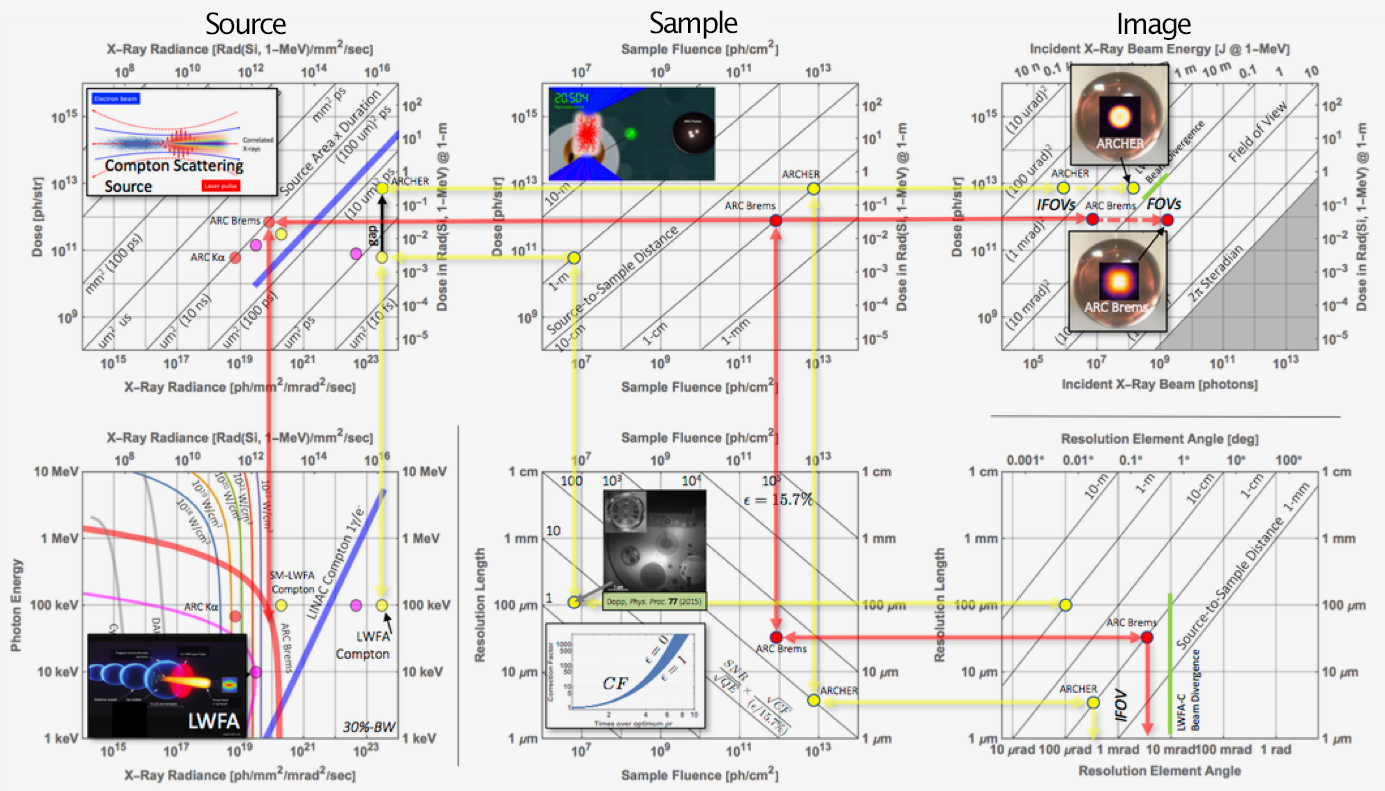Craig Siders (17-ERD-122)
Executive Summary
We are assessing the viability of using Compton scattering light sources for diagnostic purposes to enable a new regime of high-energy-density and Inertial Confinement Fusion experiments. This research supports NNSA goals of reducing nuclear dangers and managing the nuclear weapons stockpile while enhancing Lawrence Livermore National Laboratory's core competencies in lasers and optical science technologies, high-energy-density science, and nuclear weapons science.
Project Description
The purpose of this project is to determine the x-ray source requirements for key high-energy-density science (HEDS) and inertial-confinement-fusion (ICF) diagnostics to improve the viability of a specific type of mission-relevant experiments that uses radiography and spectroscopy. The technical motivation is the need for brighter x-ray sources to meet requirements of high-energy (10 to 100 keV) high-resolution (a few micrometers in size) x-ray radiography on ICF/HEDS platforms like the National Ignition Facility (NIF) at Lawrence Livermore; the OMEGA laser at the Laboratory for Laser Energetics in Rochester, New York; and the Joint Actinide Shock Physics Experimental Research (JASPER) gas gun, located at the Nevada National Security Site (formerly the Nevada Test Site). Our research will explore the use of a Compton scattering x-ray source to provide bright, highly collimated, tunable, hard x-rays with high-spatial-resolution for radiography of HEDS and ICF targets. To assess the viability of Compton-scattering-based x-ray sources for radiographic diagnostic purposes, we are using the Advanced Radiographic Capability High Energy and Resolution (ARCHER) modeling tool to develop end-to-end simulations of the diagnostics for several future experiments. Compton scattering uses the collisions of laser photons with energetic electrons to upshift photon energy (up to 100,000 eV). Using laser-wakefield-accelerator-based electron sources, very compact, bright, and all-optical x-ray sources have already been demonstrated that would be sufficient for some classes of NIF experiments. The Compton-scattering-based x-ray sources include the two-fold advantage of having higher photon energy and greater spatial resolution than traditional diagnostics. Specifically, we will (1) use Monte Carlo models to design relevant experimental configurations to define requirements on a usable x-ray source; (2) quantify the scaling of the x-ray brightness with the laser and electron-beam parameters driving the Compton source; and (3) carefully analyze the relative merits of competing options for producing the electron beam.
Given a defined metric for “useful data” (e.g., signal-to-noise and signal-to-background in an image, and resolution of spatial and/or depth features), detailed Monte Carlo calculations performed over a sample space of brightness, source size, spectrum, and angular divergence can be used to determine the minimum required x-ray brightness and spatial/spectral extent. This x-ray requirement can then flow back through our Compton codes to define the energy requirements of the electron beam and the scattering laser. Radio-frequency and laser-wakefield-based accelerator technologies can then be studied and their performance compared to the required electron-beam phase space. This approach will maintain x-ray peak spectral brightness, interaction laser performance, and electron-beam performance to enable the evaluation of alternative technologies.
Mission Relevance
By enabling relevant HED and ICF experiments, this research supports the Lawrence Livermore National Laboratory and NNSA goals of reducing nuclear dangers and managing the nuclear weapons stockpile. It also supports Homeland Security missions, such as port security under the Global Nuclear Detection Architecture. This research will also enhance Livermore's core competencies in lasers and optical science technologies, HEDS, and nuclear weapons science. The Laboratory's leadership position in high-power, short-pulse drive lasers for secondary sources such as e-beams and x-ray sources represents a strong base upon which to build this new capability.
FY17 Accomplishments and Results
In FY17, we (1) began performing Monte Carlo simulations of diagnostic geometries for radiography, power diffraction, and detection of tracer isotopes; and (2) initiated a study of the scaling of Compton sources in terms of spectral brightness.
Publications and Presentations
Bayramian, A., et al. 2017. "kW Short Pulse Laser Driver Technology." LLNL-PRES-730848.
Candies, N. L., et al. 2017. "High-energy X/Gamma Ray Source from Compton Scattering and Bremsstrahlung in a Self-Modulated Laser Wakefield Accelerator." LLNL-PRES-738814.
Siders, C. W., et al. 2017. "Current and Future Directions on DPSSL at LLNL." LLNL-PRES-733530.
Spinka, T. 2017. "Kilowatt-Class, Application-Enabling Petawatt Laser Technology." LLNL-PRES-739587.
   






